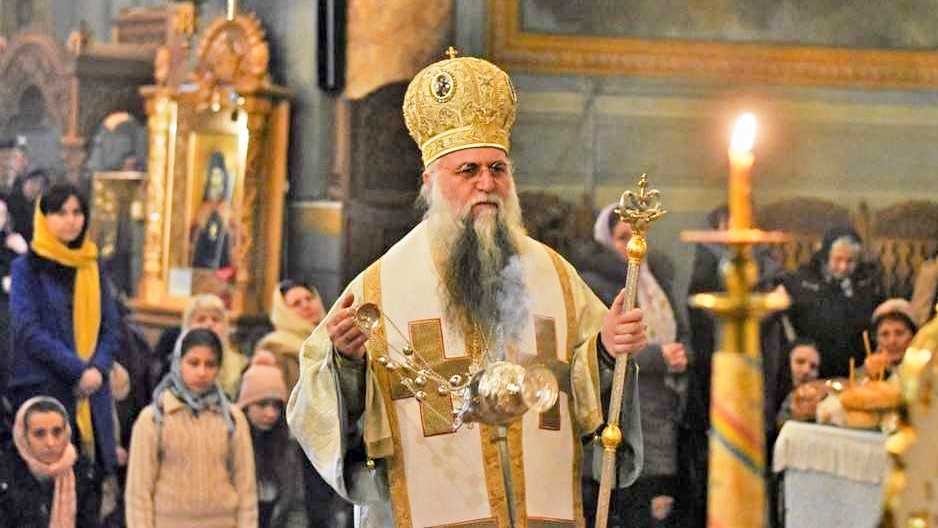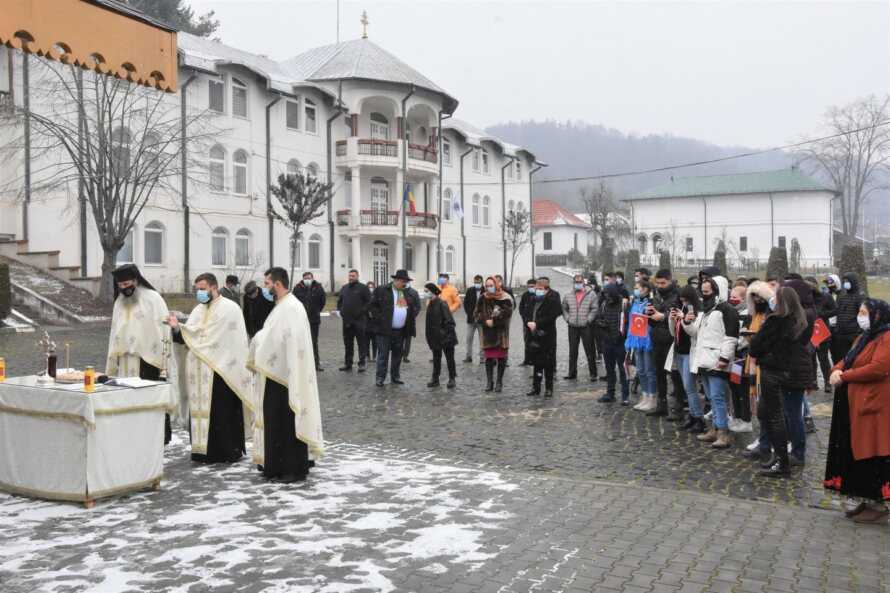The Church has actively contributed to Romani people’s liberation, and supports their social inclusion, the Archbishop of Râmnic said on Saturday, during a memorial service for the Roma who died in deportation and slavery.
The event marked 165 years since the liberation of Roma in Romanian Principalities.
Representatives of the Roma community at the national and county level, local officials, General School Inspector Mihaela Andreianu and other Vâlcea County School Inspectorate representatives participated.
At the end of the service, Father Counselor David Totu read Archbishop Varsanufie’s message on the role of the Church in freeing Roma and supporting their social inclusion.
The Church has actively contributed to the Romani people’s liberation and is currently supporting social inclusion projects
“Jesus Christ is the same yesterday and today and forever” (Hebrews 13: 8), and our presence in the communion of prayer is a happy occasion today to understand that God, “many times and in many ways,” reveals to us the mystery of His love for humankind, which, by understanding, we must place as the light of conscience and the foundation of love for fellow human beings.
Marking the 165th anniversary of the liberation of Roma in the Romanian Principalities (February 20, 1965), we asked the Most Merciful God, in our prayers, to forgive the sins of those who had fallen asleep, as the Church has always done.
Any administrative document did not impose the respect of the Roma communities towards the priest. Still, it came naturally, as the words used to address the priest – “dear father” (taica părinte), deeply imbued in the culture of this ethnic group, reveal not a rupture between the shepherd and community but an active presence of the priest in its life, by blessing the houses on the feasts of Christmas and the Baptism of the Lord, by baptizing infants and living together the pain of losing loved ones and then remembering them on appropriate occasions.
Although unable to control and impose the hierarchy of social relations, the Church supported the Roma communities both spiritually and philanthropically.
There are many documents, starting with the 14th century, which attest to the social work near cathedrals, churches and monasteries.
Directly, Saint Anthimos the Iberian, in his Settlement, firmly demanded that the priests from Wallachia investigate the Gypsies, perform services for them because they are Christians baptized in the name of the Holy Trinity, like the other Romanian believers.
In 1746, another Metropolitan of Wallachia, Neophyte of Crete, decided and imposed Roma’s liberation from the monastic and metropolitan estates, coming into conflict with the great and small Romanian nobility.
Moreover, the Church’s message was a constant call to holiness, which showed that as man frees himself from passions, divine grace can dwell ever more profound in him.
We discover this in the life of St. Moses the Ethiopian who, leaving the bad habits of his life, learned not only that he must dedicate his life to God but also to take care of his fellow men.
In the Church, the call to holiness was addressed to all, because, according to the word of the Holy Apostle Paul: “There is neither Jew nor Gentile, neither slave nor free, nor is there male and female, for you are all one in Christ Jesus” (Galatians 3: 28).
By organizing classes for the children of cities and villages, the Church supported all her spiritual sons and daughters alike near places of worship. This fact made it possible for Archimandrite Josaphat of Snagov, the Roma abbot who had studied in schools organized by Saint Gregory the Teacher, Metropolitan of Wallachia, to overcome customs and social barriers, becoming a member of the Commission for the Liberation of the Roma, which campaigned for the imposition this new social state.
The activity of Archimandrite Josaphat of Snagov was both known and supported by Metropolitan Nephon II of Wallachia.
The Church played an important role after 1965 in the social integration of the Romani people by facilitating access to educational institutions and the activity at the chant stand, recognizing their musical talent.
Thus, at the end of the 19th century and the beginning of the 20th century, it was not accidental the presence at the courses of the Central Seminary in Bucharest and then of the Faculty of Theology in Bucharest, of Archimandrite Callinicus Constantine Şerboianu from Cernica, of Roma ethnicity, who received his bachelor degree in theology in 1908.
Archimandrite Callinicus composed a book in French of about a hundred pages on the History and customs of the Roma in Romania; he founded and led the Roma Association, militating for the organization of craft cooperatives and a particular People’s University.
The Roma communities were decimated between 1941-1943 when Ion Antonescu decided to deport them to Transnistria, a moment that recorded in history the humanitarian attitude and the care, often alone, priests manifested towards them.
The social-philanthropic work of the Church, found in the memorial pages that reproduce aspects from the communist regime, signified, according to direct and completely truthful testimonies, strong support for the daily life of many Romani people.
Since 1990, the Church has developed several social and educational projects to support Roma integration and essential cultural and spiritual programs.
This year, 2021, marks 15 years since the publishing, with the blessing of Patriarch Teoctist of blessed memory, of the Book of Prayer in the Romani language. After another year, a CD with the Divine Liturgy in Romani language was launched.
Seeking to bring the blessing in each of our spiritual son and daughter’s life, the Archdiocese of Râmnic established a Department for Mission to the Roma, coordinated by Father Daniel Buda.
The activity of this department was not intended to be an occasional one. Social programs were organized and developed to contribute to a concrete and efficient integration of the Roma:
- Mirro ghiozdano – My backpack, through which Roma children received backpacks and supplies at the beginning of each school year.
- Sastipen le rromenqe – The health of the Roma, carried out in partnership with the Department of Public Health Vâlcea through which actions were carried out to prevent diseases in Roma communities.
- Phirutno vaś o des – Pilgrim for a day, social pilgrimages.
- Podema tatipe – Warm boots, through which shoes for the cold season were offered.
- Śkola si laçi – The school is good, actions to encourage Roma children to attend school (against school dropout);
- Av paś o Del – Come to God, catechesis program for Roma communities;
- Aven te das duma – Your child is important, let’s talk about him, psychological counselling program with fathers;
- Sastipe tirre hurdeske – Your child’s health, disease prevention program for children.
At the same time, work is being done on the translation into the Romani language of the service texts of Baptism, Marriage, Funeral and Memorial Service.
We understand, therefore, that the Church has actively contributed to the liberation of the Roma and is currently supporting projects for their social inclusion. But we need a joint work of the priests with those in this community because the Church’s programs’ success will be seen in time.
The time that God gives us must become a time of good deeds, working together for our spiritual formation, and helping others.
Be for your brothers the hand of Christ the Lord ever extends to us men!
May God bless you and pour out His grace on you!
† Varsanufie
Archbishop of Râmnic
Read more:
Photography courtesy of the Râmnic Archdiocese
Follow us on Twitter: @BasilicaNews







